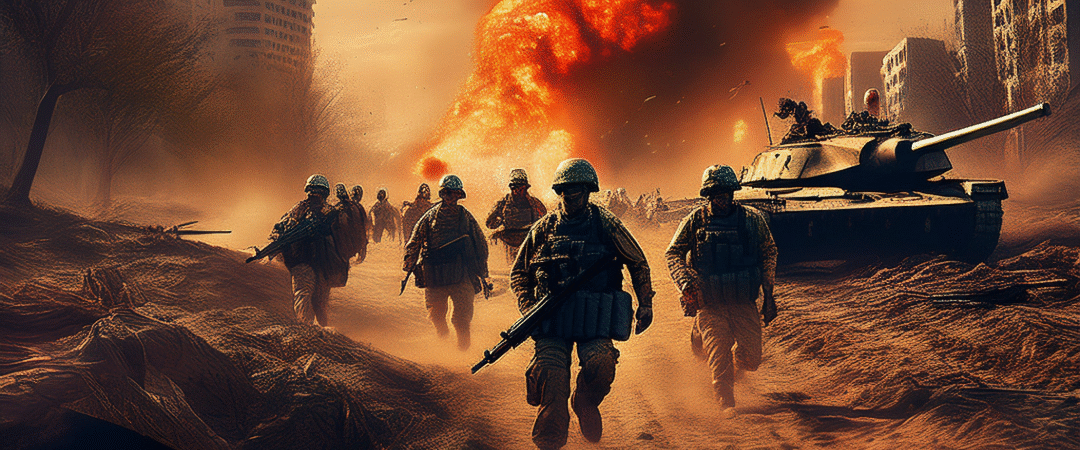The phrase “World War 3” has long been relegated to the realm of fiction, a terrifying, often-nuclear nightmare best kept on the movie screen. Today, however, that chilling specter feels uncomfortably real. It is not a single, grand declaration that concerns us, but the slow, inexorable convergence of crises across the globe that suggests we may already be in the initial, simmering stages of a new Great Power conflict.
We are witnessing a dangerous moment in history—a fundamental reshaping of the world order, marked by aggressive revisionism and the breakdown of established international norms. The forces that threaten to tip the scales from regional conflict to global war are clear, present, and interconnected.
The New Flashpoints: A World on Edge
Unlike the binary Cold War, the potential architecture of World War 3 is multi-polar and messy, with conflicts acting as pressure points across the globe:
- The War in Europe: The ongoing conflict in Ukraine has fundamentally reset relations between the West and Russia, raising the potential for dangerous escalation. The direct involvement of NATO countries in supplying military and financial aid creates a constant risk of miscalculation that could lead to a direct clash between nuclear-armed states.
- The Asia-Pacific Tensions: The mounting geopolitical friction between the United States and China, particularly over the status of Taiwan, represents the highest-stakes standoff in the world. Any military action in this region would instantly draw in the world’s largest economies and militaries, creating a global economic and security catastrophe.
- The Middle East Volatility: This region remains a complex web of proxy conflicts, with Iran, Israel, and other major powers locked in a cycle of direct and indirect hostility. The potential for a localized conflict—whether in the Gulf, the Red Sea, or within the Levant—to spiral into a broader regional war that pulls in global allies is ever-present.
Beyond Bombs: The New Dimensions of Conflict
A potential World War 3 will not just be fought with conventional forces; it will leverage every tool of modern statecraft, creating unprecedented complexity:
- Cyber Warfare: National infrastructure—from power grids and financial markets to communication networks—is now a frontline. A major conflict would involve devastating, coordinated cyberattacks designed to paralyze an adversary’s society before the first shot is fired.
- Economic War: The use of sanctions, export controls, and strategic de-coupling has become a powerful weapon. A global conflict would see the world fracture into competing economic blocs, destroying global supply chains and causing widespread financial instability.
- The Information Battleground: Sophisticated disinformation and propaganda campaigns are now integral to modern warfare, aimed at fracturing domestic unity and undermining international alliances. The goal is to win the hearts and minds of populations before, and during, physical conflict.
Navigating the Risk: Strategy in a Turbulent World
For entrepreneurs and businesses in this era of heightened global risk, the constant threat of instability requires a new level of strategic planning:
- Supply Chain Resilience: Businesses must aggressively de-risk their supply chains, moving away from reliance on single geopolitical regions and diversifying suppliers across politically stable zones.
- Digital Fortress: Investment in state-of-the-art cybersecurity and data protection is paramount, as critical infrastructure and corporate data become prime targets in a new, hyper-connected conflict environment.
- Financial Preparedness: Companies should stress-test their financial models against worst-case scenarios, including severe currency fluctuations, banking crises, and sudden market closures, ensuring they have the liquidity to weather prolonged economic turbulence.
Avoiding the Precipice
The good news is that World War 3 is not an inevitability. The doctrine of Mutually Assured Destruction (MAD), while terrifying, has historically acted as a strong deterrent against direct conflict between the world’s most powerful nations.
However, deterrence only holds if communication remains open and leaders do not make fatal miscalculations. The path away from the brink requires a renewed commitment to diplomatic off-ramps, a common respect for international law, and a shared acknowledgment that, in a globally interconnected world, the cost of a full-scale conflict is simply too high for anyone to truly win.
The coming years will be defined by how the world’s great powers manage these mounting tensions. We are living in a moment of great danger, but also great responsibility—the responsibility to ensure that the horrors of the past are not the prophecy of our future.
